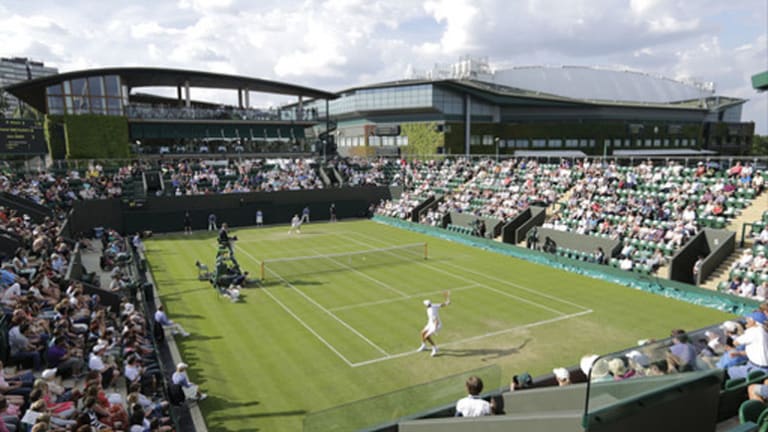This year marks the 50th anniversary of TENNIS Magazine's founding in 1965. To commemorate the occasion, we'll look back each Thursday at one of the 50 moments that have defined the last half-century in our sport.
Tennis has undergone revolutionary change at every level over the last 50 years. From the strokes to the clothes to the money on offer, the sport today would be unrecognizable to its 1965 self. But nowhere is this more true than in the realm of television. Before the Open era, tennis was, as Bud Collins once called it, the “secret sport,” hidden away from America's great unwashed behind ivy-covered walls. Today, between ESPN, the Tennis Channel, and those ever-flowing steams on our computers, there’s hardly a match anywhere that we can’t watch from our living rooms. By now, young viewers might believe it’s their right to have access to live tennis at all times.
What would those same kids think if you told them that until 1979, the only matches from Wimbledon that were broadcast in the U.S. were the finals, and they were shown on tape delay, cut to fit a short window of programming time, eight hours after they had ended and the world already knew the result? Even during the boom years for the sport here, that was all we got from the Big W.
It wasn’t as if the sport’s potential on-screen appeal had never been noted. In 1966, Sports Illustrated, casting its eye across the TV-sports landscape, predicted that tennis would be the game that fit the medium perfectly. The court filled the screen, and, through constant close-up shots, an intimate connection between the players and the spectators at home was fostered. By the start of the ’70s, that forecast seemed to be coming true, as television began to bend the game to its rules. The tiebreaker was introduced at the U.S. Open in 1970 to make match lengths more predictable for programmers. Two years later, Penn’s “optic yellow” balls, which popped on color screens, replaced white balls at pro events. That same season, in 1972, NBC made Lamar Hunt’s World Championship Tennis (WCT) tour the first to secure a regular spot on national TV. To Hunt, a pro football executive, television was the promised land.
